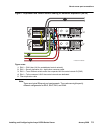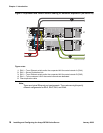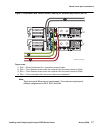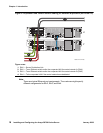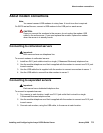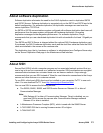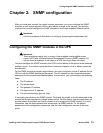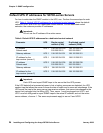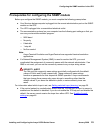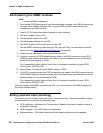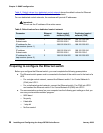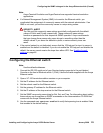
Configuring the SNMP modules in the UPS
Installing and Configuring the Avaya S8700-Series Server January 2008
23
Chapter 2: SNMP configuration
After you install and connect the control network equipment, you must configure the SNMP
modules in each Avaya-supplied UPS to send alarms or traps to the servers. This process
requires that you also configure the SNMP subagent in the Avaya-supplied Ethernet switch.
!
Important:
Important: Use the procedures in this section to configure Avaya-supplied equipment only.
Configuring the SNMP modules in the UPS
!
Important:
Important: These procedures apply only to a new, Avaya-supplied uninterruptible power
supply (UPS) with a Simple Network Management Protocol (SNMP) module. Do
not use these procedures to set traps on a UPS that Avaya does not supply.
You must configure the SNMP module in the UPS to report alarms to the server when hardware
problems occur. The module reports an alarm if commercial power is lost or battery resources
are depleted.
For the SNMP module to properly report alarms, you must configure a unique IP address for the
UPS on both the SNMP module and the server. This IP address can be a customer-provided
address or the Avaya-provided default address. At a minimum, you must configure the following
items:
● The IP address
● The subnet mask
● The gateway IP address
● The trap receiver IP address
● The community string (get, set, trap)
A third party manufactures the SNMP module. The brand, the model, or the firmware load of the
module that Avaya supplies can change without notice. For this reason, this document does not
provide specific instructions on how to connect to and configure the SNMP module. For more
information, see the documentation that comes with the SNMP module. For the default
password and the configuration commands, see the local configuration section of that user
guide.



